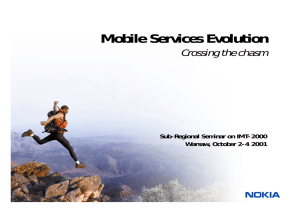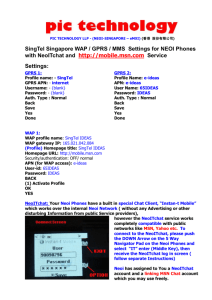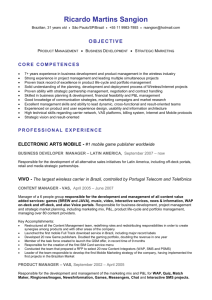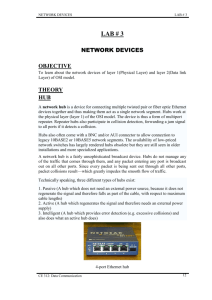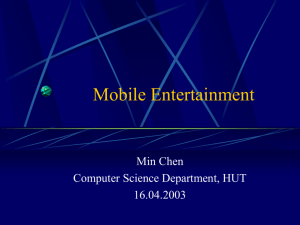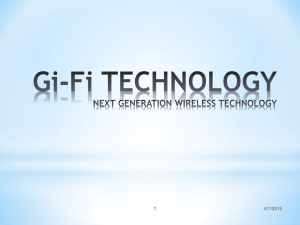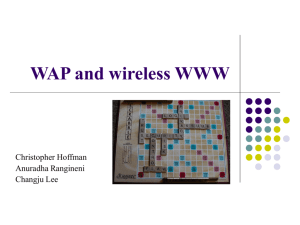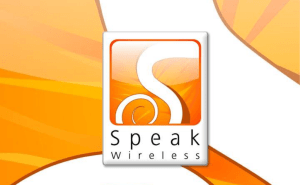Understanding digital communication systems – edited
advertisement
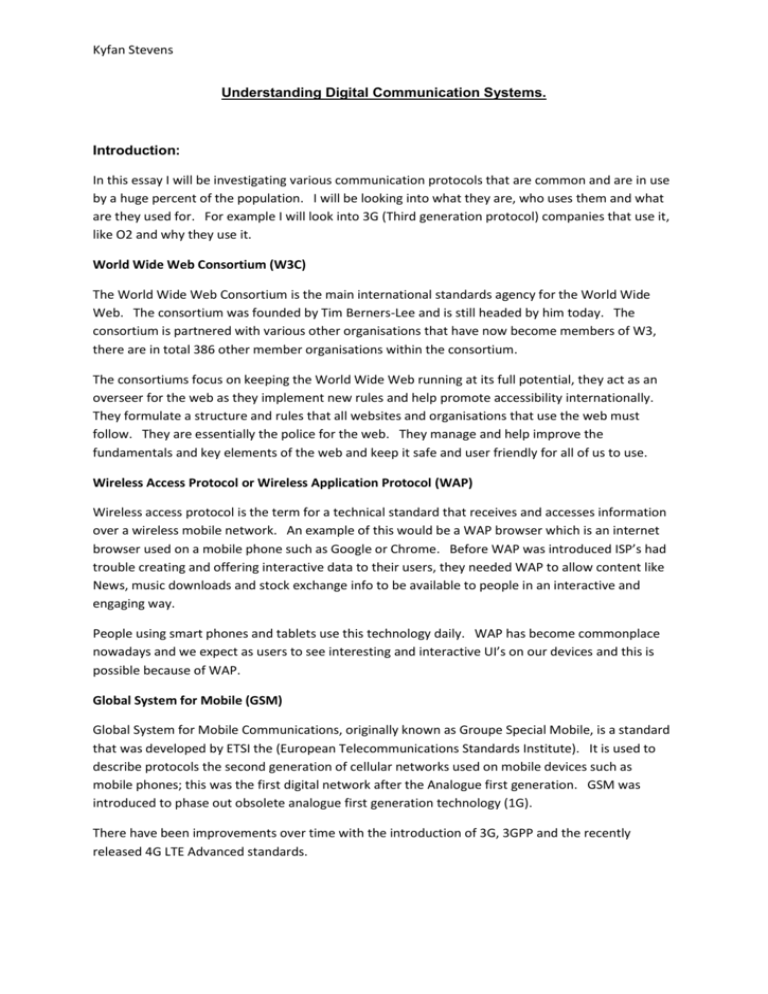
Kyfan Stevens Understanding Digital Communication Systems. Introduction: In this essay I will be investigating various communication protocols that are common and are in use by a huge percent of the population. I will be looking into what they are, who uses them and what are they used for. For example I will look into 3G (Third generation protocol) companies that use it, like O2 and why they use it. World Wide Web Consortium (W3C) The World Wide Web Consortium is the main international standards agency for the World Wide Web. The consortium was founded by Tim Berners-Lee and is still headed by him today. The consortium is partnered with various other organisations that have now become members of W3, there are in total 386 other member organisations within the consortium. The consortiums focus on keeping the World Wide Web running at its full potential, they act as an overseer for the web as they implement new rules and help promote accessibility internationally. They formulate a structure and rules that all websites and organisations that use the web must follow. They are essentially the police for the web. They manage and help improve the fundamentals and key elements of the web and keep it safe and user friendly for all of us to use. Wireless Access Protocol or Wireless Application Protocol (WAP) Wireless access protocol is the term for a technical standard that receives and accesses information over a wireless mobile network. An example of this would be a WAP browser which is an internet browser used on a mobile phone such as Google or Chrome. Before WAP was introduced ISP’s had trouble creating and offering interactive data to their users, they needed WAP to allow content like News, music downloads and stock exchange info to be available to people in an interactive and engaging way. People using smart phones and tablets use this technology daily. WAP has become commonplace nowadays and we expect as users to see interesting and interactive UI’s on our devices and this is possible because of WAP. Global System for Mobile (GSM) Global System for Mobile Communications, originally known as Groupe Special Mobile, is a standard that was developed by ETSI the (European Telecommunications Standards Institute). It is used to describe protocols the second generation of cellular networks used on mobile devices such as mobile phones; this was the first digital network after the Analogue first generation. GSM was introduced to phase out obsolete analogue first generation technology (1G). There have been improvements over time with the introduction of 3G, 3GPP and the recently released 4G LTE Advanced standards. Kyfan Stevens Third Generation Protocols (3G) Third Generation or 3G as it is colloquially known, is a term used to describe or represent the Third Generation of Telecommunications technology. It is also known as TRI-Band 3G. This is yet another set of standards used on Mobile devices and mobile Telecommunication services and networks that comply with IMT-2000 (International Mobile Telecommunications). These are specifications set by the International Telecommunication Union. Telecommunication services such as O2 or Vodafone market 3G technology, this indicates that the service is provided over a Third Generation wireless network. Services that are advertised as being 3G have to meet regulations and standards set by the International Telecommunication Union. Some of these standards are that they are required to provide a peak rate of at least 200kbit/s which is roughly 0.2mbit/s. Most providers outdo the minimum accepted requirements for a Third Generation service. Multimedia Messaging Service (MMS) Multimedia Messaging Service or MMS as it is generally abbreviated is a generic method of sending messages that include Multimedia content to and from mobile devices. It is an extended version of the earlier developed SMS (Short Message Service). SMS originally allowed users to communicate by sending messages to one another but were only allowed to type the maximum of 160 characters. The most popular use for MMS is to exchange photographs from camera equipped devices like an IPhone or any other device nowadays. It is also a popular method of delivering media such as videos, ringtones and text pages. This standard was developed by the Open Mobile Alliance (OMA). The OMA were originally part of the 3GPP and WAP groups. General Packet Radio Service (GPRS) General Packet Radio Service is a POMDS (Packet Orientated Mobile Data Service) on the Second and Third generation cellular communication services Global System for Communications (GSM). Originally standardised by the ETSI (European Telecommunication Standards Institute) GPRS was created in response to earlier CDPD (Cellular Digital Packet Data) and I-mode packet switched cellular technologies. GPRS is currently maintained by the Third Generation Partnership Project (3GPP). GPRS is charged based on the amount of data that is transferred, which is contrary to the circuit switched data which is generally billed per minute used. GPRS can be sold as a bundle, for example, 5GB a month on a fixed fee basis, or on a pay as you go contract. If the user exceeds their limit the provider may disallow any further data or the provider may charge the user per Megabyte over their cap. Bluetooth Bluetooth is another form of wireless technology that allows its users to transfer data over short distances. It uses short-wavelength radio transmissions in the ISM form from 2400-2480 MHz from Kyfan Stevens mobile and fixed devices such as a Mac or PC. This creates PAN’s (Personal Area Networks) which have a high level of security. This technology was created by telecommunications vendor Ericsson in 1994. Bluetooth Technology is managed and overseen by SIG (Bluetooth Specialist Interest Group), whose members total above 17,000 member companies who are in the fields of telecommunication, computing, consumer electronics and networking. SIG observes and oversees the development of the technology and helps manage and qualify the programme and it also protects trademarks. If you want your product to be marketed as a Bluetooth device you have to be qualified to standards defined and specified by SIG. Patents are required to implement the latter technology and are only licensed to qualifying devices. Broadband ADSL (Asymmetric Digital Subscriber Line) An Asymmetrical Digital Subscriber Line is a variant of subscriber line technology. ADSL enables a faster connection and data transmission via copper telephone lines rather than using conventional standards such as a voice band modem. The technology does this by using frequencies that are not being used by a voice telephone call. Splitters or DSL filters are used to allow a single connection that can be used for Phone or voice calls and ASDL services at the same time. ADSL can only be transmitted over a short distance, usually the last mile of connection, from the telephone exchange. This is typically a distance of about 4km. It has been known to exceed this and end up reaching a distance of about 8km. Voiceover Internet Protocol (VoIP) VoIP is the communication protocol that incorporates the technologies, methodologies and transmission techniques that are used to exchange voice and multimedia communication over an IP (Internet Protocol) network. The Internet is an IP network. VoIP is available on many mobile devices such as Smartphone’s and portable devices such as an Ipad. This is used so people who are not on a phone can still send SMS messages over 3G or a WI-FI connection.

